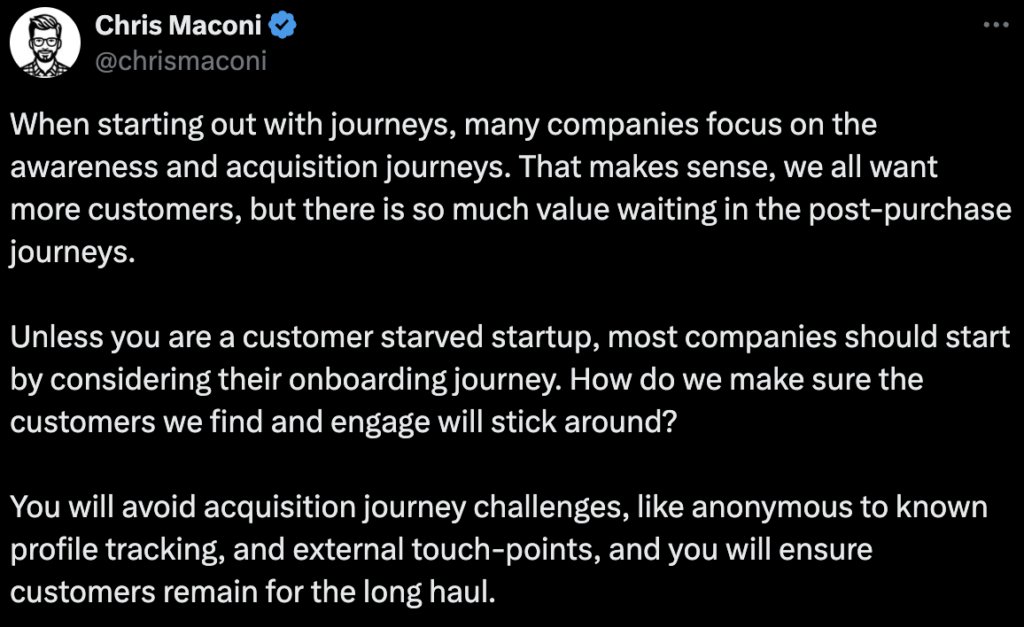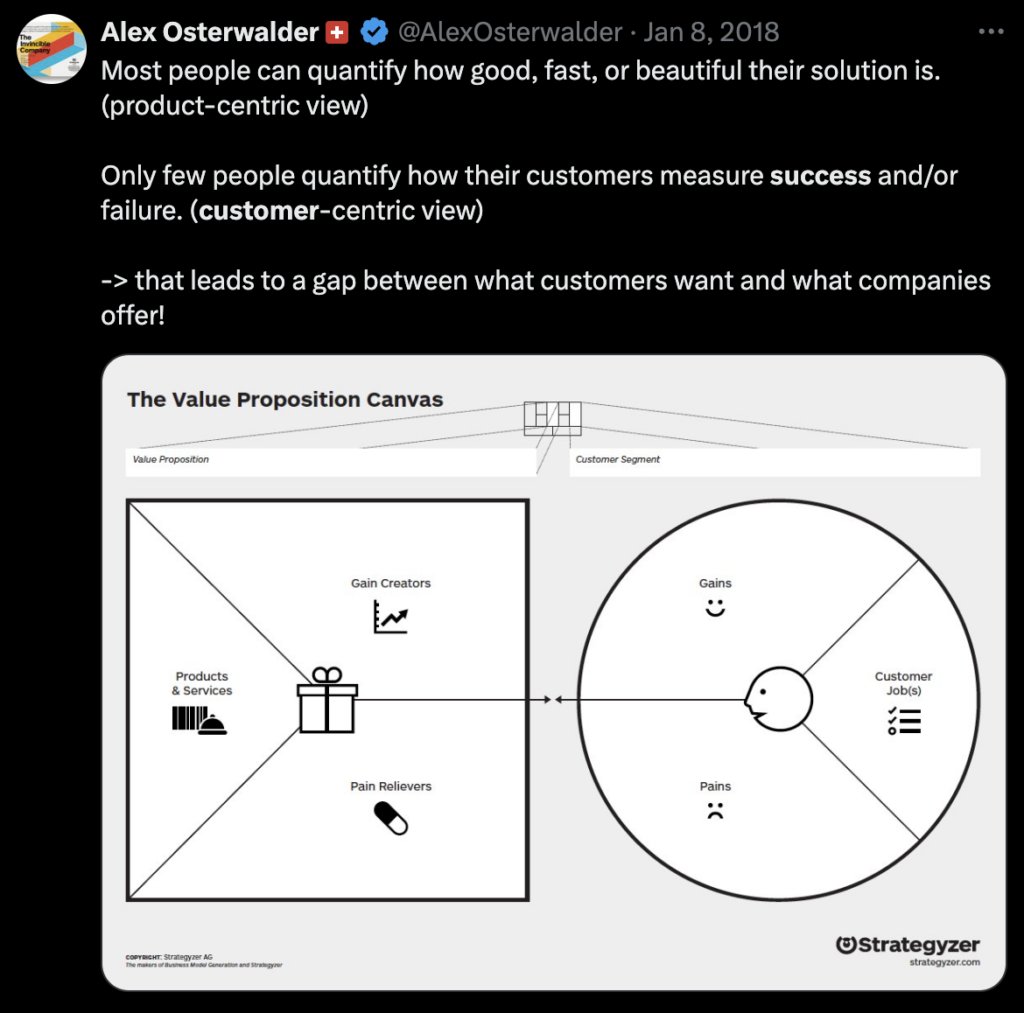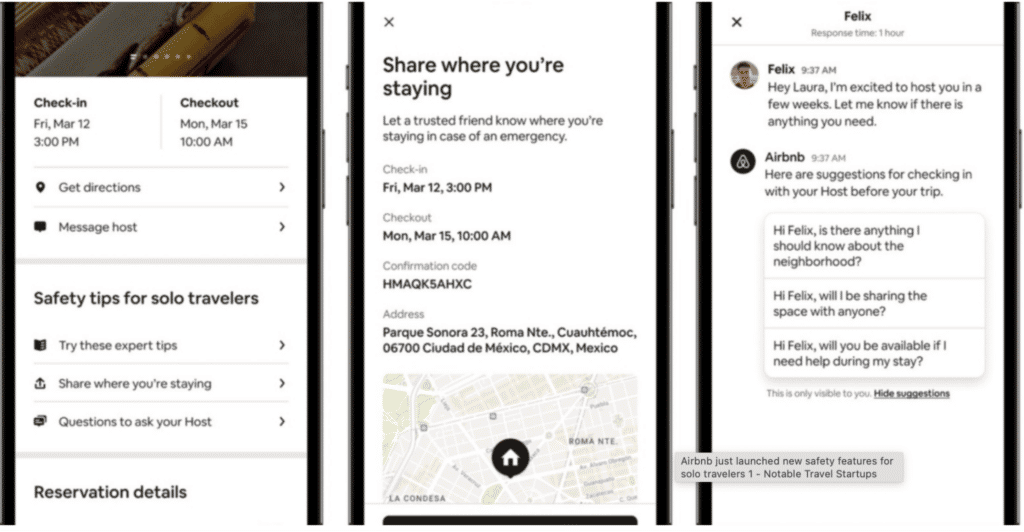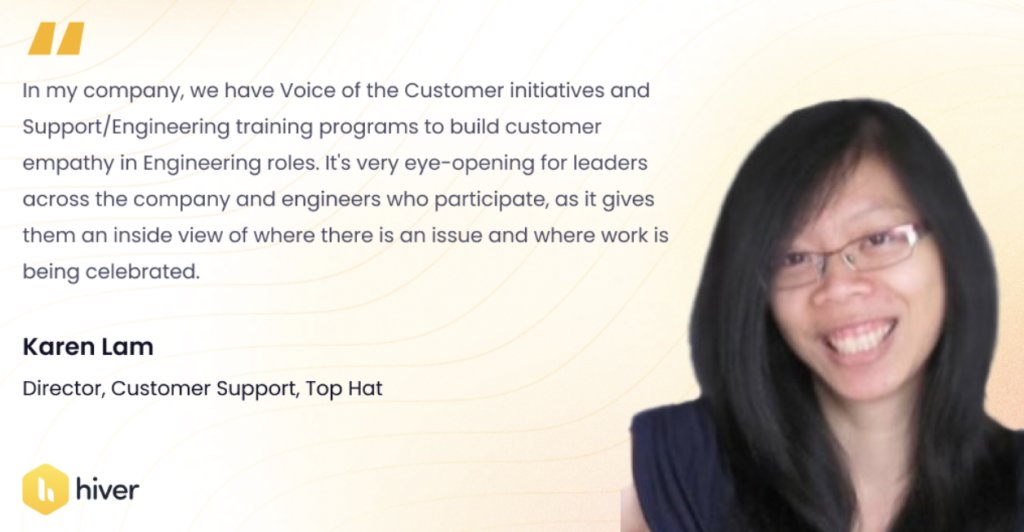How To Build A Customer-Oriented Company

Table of contents
“The customer is always right!”
You might have heard this a million times before, but in this competitive era, this proverb has never been more relevant. In fact, according to a Forbes article, 86% of consumers* are willing to pay more for good customer experience.
Hence, companies are prioritizing customer support to become more profitable.
But what does it truly mean to be a customer-oriented company? To put it simply, it’s more than just providing excellent service; It is about putting the customer at the heart of your business and leaving no stone unturned in accommodating their needs through a solid and efficient support system.
So, how do you build a customer-oriented company? How do you create a culture where customer satisfaction isn’t just a buzzword but a core value that drives every decision?
In this blog post, we’ll explore strategies that can help your business become more customer-centric. We’ll also explore some real-world examples and insights that will elp you earn their loyalty for long term.
Table of Contents
- What Is a Customer-Oriented Company?
- 6 Strategies for Building a Customer-Oriented Company
- Examples of Customer-Oriented Companies
- Build a Customer-Oriented Company with Great Customer Service
- Frequently Asked Questions (FAQs)
What Is a Customer-Oriented Company?
A customer-oriented company places the customer at the heart of everything it does. It’s a business that understands that its success depends on making their customers happy. This orientation isn’t just about providing good products or services; it’s about fostering genuine relationships with their customers, building trust, and creating a fulfilling experience for their customers.
Let’s take two real-life examples to understand this better.
Founded in 1985, Blockbuster was once the go-to place for movie and game rentals. But their approach focused heavily on maximizing profits through tactics like charging late fees and limiting customer options. They offered a limited selection of movies at any given time. Customers had to physically visit a store to rent a movie, which meant they were restricted by the store’s inventory. Also, if a popular movie was out of stock, there was no alternative but to wait or settle for something else.
This strategy might have worked in the short term. But it overlooked what customers really wanted: convenience and affordability. Owing to this, Blockbuster lost its market share and, ultimately, had to shut shop in 2014.
On the other hand, Netflix took a completely different approach. From the beginning, they focused on understanding what customers wanted—a hassle-free, affordable way to enjoy movies and TV shows at their convenience.
Netflix eliminated late fees and offered personalized recommendations. They also transitioned to streaming, which gave customers instant access to a vast library of content. So, by prioritizing customer satisfaction, Netflix grew into a global entertainment giant – as we see today.
So, to summarize, a customer-oriented company is the one that:
- Fosters empathy and understanding of what the customers need and want.
- Constantly focuses on enhancing products, services, and customer experiences.
- Prioritizes customer loyalty and satisfaction over quick sales.
6 Strategies for Building a Customer-Oriented Company
So, you’ve decided that you want to make your company more customer-oriented. That’s amazing, but where do you start?
Here are six actionable strategies that can help you do just that.
1. Practice empathy and understanding
One of the cornerstones of building a customer-oriented company is practicing empathy and truly understanding your customers.
It’s not just about solving their problems; it’s about putting yourself in their shoes and seeing the world through their eyes. When you understand their needs and aspirations, you can create experiences that resonate with them on a deeper level.
So how do you do it? Here’s the answer:
- Listen actively: Whether it’s through direct feedback, social media interactions, or customer service calls, pay attention to what they’re saying. It’s about understanding the emotions and intentions behind them.
- Walk in their shoes: Spend a day experiencing your business as a customer. Use your product, go through your website, or even call your own customer service. This exercise can uncover pain points that might not be visible from an operational POV.
- Ask the right questions: Instead of asking customers, “What do you think?” try asking, “How do you feel about this” Shifting the focus from thoughts to feelings can reveal deeper insights into their experiences and needs.
- Validate their feelings: Acknowledge your customers’ emotions, even if you don’t agree with their perspective. This shows that you’re taking their concerns seriously.
Pro-tip: Here’s what Karen Lam from Top Hat did to ensure practicing empathy becomes a company-level policy:
2. Work on mapping your customer journey
A customer journey map is a visual representation of the customer’s experience with your business. It helps you identify their pain points and opportunities for improvement.
Mapping your customer journey is like creating a roadmap that guides your customers from the moment they first hear about your brand to the point where they become loyal advocates.
It’s about understanding every interaction a customer has with your business and finding ways to make each step of the journey as smooth and satisfying as possible.
Here’s how to create your customer journey maps
- Identify key touchpoints: Start by identifying all the key interactions a customer has with your brand—these are your touchpoints. This could include everything from visiting your website, interacting with customer service, making a purchase, to receiving a follow-up email. Each touchpoint is an opportunity to impress your customers so it’s crucial to get them right.
- Define your customer personas: Once you’ve identified the touchpoints, figure out your customers’ needs, wants, and aspirations at every step.
- Use customer feedback: Gather feedback directly from customers. Ask them about their experiences at different stages of their journey. What did they enjoy? What frustrated them? What would make their lives easier? Use this feedback to refine your journey map and address any pain points.
- Analyze and iterate: Customer journeys aren’t static—they evolve over time along with the needs and expectations of the customers. Regularly review and update your journey maps based on new data and insights.
Here’s how Chris Maconi, ex-product manager of Qualtrics stresses on the importance of focusing on your customers’ post-purchase journey.

Recommended read: Customer Journey Mapping: Definition and How To Create
3. Create personalized experiences for your customers
Customers todayexpect more than just a one-size-fits-all approach. They want experiences tailored experiences It can be in the form of a personalized email, a product recommendation based on their previous purchases, or even just being addressed by their first name.
Personalization is necessary for building strong, lasting relationships with your customers.
Here’s how you can do it:
- Personalize customer communication: Something as simple as addressing customers by their first name in emails or messages can make a big difference. Go a step further by customizing the content of your communication based on their preferences. For instance, if a customer frequently buys outdoor gear, highlight your latest outdoor product offerings in your emails to them.
- Offer tailored product recommendations: Use algorithms or AI-driven tools to suggest products or services that match your customers’ interests. Amazon does this exceptionally well, often recommending products that are spot-on based on a customer’s previous purchases and browsing history.

- Create personalized customer journeys: Develop and optimize personalized pathways for customers based on their behavior on your website or app. For example, if a customer abandons their shopping cart, send them a reminder email with a discount code to encourage them to complete their purchase.
4. Deliver exceptional customer support
Customer support is at the frontline of your business. It’s what customers turn to when they need help, have questions or face issues. How you handle these interactions can make or break their experience with your company.
Offering top-notch customer support can set your company apart from competitors and can create loyal customers who value your services. Here are some tips to follow:
- Train your support team: Your customer support team should not only be well-versed with your product but should also be experts in soft skills like empathy, active listening, and problemsolving. Regular training sessions can ensure your team is always equipped to handle customer inquiries.
- Offer multiple support channels: Make it easy for customers to reach you by offering support through various channels—phone, email, live chat, and social media. Also, invest in a knowledge base to facilitate self-service.
- Empower your support team: Give your customer support team the authority to make decisions that can resolve customer issues quickly. Whether it is about issuing a refund, providing a discount, leave the decision up to your support team. Sometimes, offering a solution that’s outside the usual protocol can lead to faster resolution of issues and ultimately, happier customers.
Here’s a technique offered by Shep Hyken, the award winning CX expert, for your support team to ensure that they deliver exceptional customer support every time:
“Here’s what I call the loyalty question:
At any given time in your interaction with the customer, simply ask yourself this question: Is what I’m doing right now going to get that customer to come back next time?”
–Shey Hyken, Transforming Customer Service into Revenue
- Follow up with your customers: Don’t let the conversation end once the issue is resolved. Follow up with customers to ensure that they’re satisfied with the outcome and to see if there’s anything else they need. This extra step shows that you genuinely care about their experience.
5. Empower your employees
This is one of the most effective ways to create a customer-oriented company. When your employees feel trusted, valued, and equipped to make decisions, they are more likely to go above and beyond for your customers.
Here’s why empowering employees is important, according to Shep Hyken:

Empowering your team translates to giving them reasonable autonomy to solve problems, make decisions on the spot, and take initiatives without always needing approval from the higher-ups.
Here’s how you can do it:
- Provide clear guidelines: Empowerment means giving employees autonomy, but within defined limits. Clearly outline the specific types of decisions that employees can make independently, such as resolving routine customer inquiries, processing refunds, or offering discounts within certain limits.
- Encourage initiative: Foster a culture where employees feel comfortable taking initiative. Whether it’s suggesting a new idea, solving a customer issue creatively, or improving a process, encourage them to step up and take ownership.
- Create a supportive environment: Empowerment thrives in a supportive environment. Ensure that managers are approachable and open to feedback. Encourage a culture of continuous learning where mistakes are seen as opportunities for growth, not as reasons for.
- Recognize and reward empowered actions: When employees take empowered actions that positively impact customers, recognize and reward them. This could be through shout-outs in team meetings, monetary bonuses, or public recognition within the company.
6. Keep room for continuous improvement
No matter how well your business is doing, there’s always room for growth. A customer-oriented company never settles for “good enough.” Instead, it constantly looks for ways to enhance the customer experience.
This mindset of continuous improvement ensures that your company stays adaptable, relevant, and responsive to the ever-evolving customer needs.
Here’s how Alex Osterwalder, founder of Strategyzer, differentiates a customer-centric view from a product-centric perspective.

Here are a couple of action points to keep your customers happy by making continuous improvements:
- Regularly collect and analyze feedback: Use surveys, reviews, and direct conversations to understand what’s working and what needs improvement. Analyze this feedback to identify patterns and areas where you can enhance the customer experience.
- Implement a continuous improvement process: Establish a formal process for continuous improvement within your company. This could involve regular meetings where teams discuss recent feedback, brainstorm solutions, and implement changes. Make sure to track the impact of these changes to ensure they’re making a positive difference.
- Encourage a culture of learning: Foster an environment where employees feel encouraged to learn and grow. Offer opportunities for training and development. When employees are motivated to improve, it positively impacts the customer experience.
- Stay ahead of industry trends: Keep an eye on industry trends and best practices. Regularly review what competitors are doing and look for new technologies or strategies that could benefit your customers.
You may also like: Customer Feedback Guide: How to Collect and What to Do With It?
Examples of Customer-Oriented Companies
Let’s examine some real-world examples of companies that have built successful businesses by putting their customers first.
These companies serve as inspiration for businesses of all sizes and industries.
1. Amazon: Leading with customer obsession
From the very beginning, Amazon has built its entire business around a core principle: customer obsession. Today, Amazon has become synonymous with exceptional customer experience and that’s what makes it a global e-commerce giant.
One of Amazon’s key strategies is its relentless focus on convenience. From one-click ordering to fast and free shipping, Amazon has made it incredibly easy for customers to shop online. They have also invested heavily in building a robust logistics network to ensure timely deliveries.

Another important strategy is personalization. Amazon leverages customer data to provide personalized product recommendations and tailored marketing messages. This level of personalization creates a more relevant and engaging shopping experience for customers.
Also, Amazon’s customer-centric culture is a driving force behind its success. The company has instilled a customer-first mindset throughout its organization, empowering employees to go above and beyond to meet customer needs.
Key learnings from Amazon:
- Make it easy for customers to do business with you.
- Use customer data to create personalized experiences.
- Cultivate a company-wide commitment to putting the customer first.
- Stay ahead of the curve by investing in new technologies and services that can enhance customer support.
2. Get It Made: Boosting support efficiency
Get It Made is a UK-based company that specializes in high-quality manufacturing solutions. It understood a simple concept: top-notch customer support was crucial to keeping their clients satisfied and coming back.
They realized that to make this happen, they needed to improve how they handled customer inquiries.
They solved this by investing in the right tools. Get It Made invested in aHiver’s helpdesk which works within the team’s inbox. With this, they were able to bring all their customer support emails into one place – within Gmail. This meant every client’s email was easily accessible, reducing the chances of missing important communication. They centralized all customer queries, which allowed them to respond faster and more efficiently.
Hiver made it simple for Get It Made’s team to assign emails to the right person, all without having to leave Gmail. This improved how the team worked together. It ensured that each query was handled by someone bringing in accountability.

This also provided complete visibility into customer queries, including who was assigned to each query, and how quickly they were being addressed.
This also ensured visibility and tracking of all customer queries. They could see who was handling what, and keep an eye on response times.
Get It Made also leveraged Hiver’s automation features. With this, they could automate mundane tasks like, like sorting emails and setting reminders for follow-ups. This saved time and allowed the team to focus on more complex customer issues. This further improved their support operations.
Key learnings from Get It Made:
- Implementing the right technology can significantly enhance your customer support capabilities.
- Create a system that empowers your team to work together efficiently and effectively.
- By keeping all customer communication in one place, you can ensure that no customer query is ever overlooked.
Read more about Get It Made here.
3. Airbnb: Building a community based on trust
Airbnb is a company that offers bed and breakfast facilities. Its has revolutionized the travel industry by helping travelers find homely accommodation around the world. Their success can be attributed to their focus on creating a community for both hosts and guests.
One of Airbnb’s key strategies is to empower hosts. The platform provides tools and resources to help hosts list their properties, manage bookings, and communicate with guests. This empowerment fosters a sense of ownership and encourages hosts to go above and beyond to provide memorable experiences.
Another important strategy is Airbnb’s focus on trust and safety. The platform implements various measures to ensure the safety of both, hosts and guests, including background checks and identity verification. This builds trust and confidence among users, making it easier for them to book and host homestays, respectively.

Finally, Airbnb’s commitment to diversity and inclusion is a key factor in its success. The platform celebrates diversity and encourages hosts and guests from all walks of life to connect. For instance, you don’t necessarily have to be from the travel industry to host an accommodation. You can be a lawyer/professor or even self-employed to list your place on the app.
Key learnings from Airbnb:
- Actively seek feedback, from hosts as well as travellers, and use it to improve the platform and services.
- Implement measures to ensure the safety of users.
- Create a welcoming community for all.
Build a Customer-Oriented Company with Great Customer Service
Creating a customer-oriented company is not just a trend; it’s a necessity for long-term success. And, it should be inculcated in the core culture of your company. Use these strategies to create a customer-first approach. This will ensure that you drive customer loyalty, and achieve sustainable growth in the long run.
It’s also essential to recognize that customer service is a key factor in creating a customer-oriented company. Great customer support isn’t just about solving problems; it’s a critical touchpoint where customers form their opinions about your brand. When you consistently deliver excellent service, you build trust and loyalty, which keeps customers coming back. This repeat business doesn’t just enhance customer satisfaction—it directly contributes to your bottom line. So customer service a vital driver of revenue and profitability.
And if you’re looking for tools to streamline your customer service operations, Hiver can help by:
- Centralizing customer communications: You can manage all your customer interactions in one place
- Automating routine tasks: Free up your team to focus on more important tasks.
- Tracking the status of inquiries: This ensures every query is sufficiently answered.
- Enabling collaboration within your team: Work together to provide exceptional customer service.
And the best part is, Hiver works on top of your inbox. This means that you don’t have to switch to a new software, or learn a new interface.
How cool is that? Try Hiver for free
Frequently Asked Questions (FAQs)
- Why is being customer-oriented important for my business?
Being customer-oriented is crucial because it builds strong, long-lasting relationships with your customers. When customers feel valued and understood, they’re more likely to be loyal to your brand, recommend you to others, and provide positive reviews.
- How can I empower my employees to better serve customers?
Empower your employees by giving them the authority to make decisions that benefit the customer, providing them with the tools and training they need, and fostering a culture where they feel supported and valued.
- Why is customer service so important in a customer-oriented company?
Customer service is often the first point of contact between your business and your customers. Exceptional customer service helps build trust and loyalty, ensuring that customers have a positive experience every time they interact with your company. This can turn one-time buyers into long-term advocates for your brand.
- What role does personalization play in superior customer support ?
Personalization makes customers feel seen and appreciated. By tailoring your services, products, and communication to individual preferences, you create a more engaging and relevant experience.
- How does being customer-oriented affect employee satisfaction?
When a company is customer-oriented, employees often feel more fulfilled because they see the positive impact of their work on customers. This can lead to higher job satisfaction, increased motivation, and a stronger commitment to the company’s goals. Happy employees are more likely to provide better service, creating a positive feedback loop that benefits both the company and its customers.


































